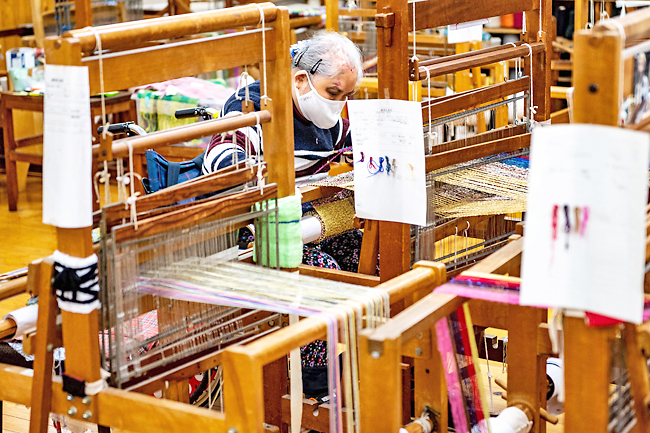Ellie Krieger
THE WASHINGTON POST – “What do you typically make for dinner on a busy weeknight?” is probably the question I am asked most often. My answer depends on the season, but in the cooler months one of my go-tos is to pop fish filets on a sheet pan alongside a quick-cooking vegetable, and season them simply with olive oil, salt and a generous amount of freshly ground black pepper.
After about 15 minutes in the oven, brightened with a squeeze of fresh lemon juice all over, and served with a hunk of whole grain bread or cooked grain, you have a lovely, tasty meal on the table with just a little effort.
The fish can be any kind, but for it to cook in the same time as a tender vegetable, such as broccoli, green beans or large asparagus, a thicker piece of firm fish, such as salmon, cod or halibut, is optimal.
You could also go with a vegetable that takes a bit longer, such as carrots, potato, squash or cauliflower, instead or in addition, you’d just need to give those a head start in the oven.
And, of course, you could expand the seasonings as you wish, adding a sprinkle of thyme, paprika or gochugaru, for example.

For this recipe, I built on the simple lemony fish and vegetable formula with an easy but sumptuously flavourful parsley-shallot sauce. All the ingredients for the sauce – heaps of fresh parsley, shallot, mustard, lemon, oil, salt and pepper – are whirred in a food processor until a smooth, creamy, gorgeously green sauce is formed. It comes together in minutes, but it can also be made up to three days ahead.
With the sauce spooned luxuriously over the fish and the tender, lightly crisped broccolini alongside, it’s an easy, satisfying answer to the question every cook is asked regularly: “What’s for dinner?”
ROASTED COD WITH PARSLEY-SHALLOT SAUCE AND BROCCOLINI
Active time: 15 minutes
Total time: 30 minutes
Four servings
This dish might just be the ideal weeknight dinner – sumptuously tasty, healthy, fast and easy. The cod and broccolini are cooked together on a sheet pan and the sauce comes together in minutes in a food processor (and can be made ahead). The result is a delightful plate of flaky fish topped with a generous dollop of gorgeously green sauce with the tender, lightly crisped vegetable served alongside.
Storage Notes: Any leftover sauce can be refrigerated in an airtight container for up to three days.
INGREDIENTS
– 1 1/2 cups lightly packed fresh parsley leaves and tender stems (from 1 bunch)
– 1 small shallot, coarsely chopped
– 1 tablespoon Dijon mustard
– 1 tablespoon fresh lemon juice
– 1/4 teaspoon plus 1/8 teaspoon salt, divided
– 1/4 teaspoon freshly ground back pepper, divided
– 4 tablespoons extra-virgin olive oil, divided
– 1 large bunch broccolini (about 8 ounces), trimmed
– 4 (6-ounce) fillets cod, thoroughly patted dry
DIRECTIONS
Position a rack in the middle of the oven and preheat to 425 degrees. In a small bowl of food processor or mini-processor, combine the parsley, shallot, mustard, lemon juice and 1/8 teaspoon each of the salt and pepper, and pulse until finely chopped.
Drizzle in three tablespoons of the oil and continue to process, stopping to scrape down the sides if needed, until the mixture is smooth and creamy. (If your processor allows for the oil to be drizzled with the motor running, do that.) You should see tiny flecks of parsley in the emulsified sauce. Transfer the sauce to a jar.
On a large, rimmed baking sheet, arrange the broccolini in a single layer and drizzle with the remaining one tablespoon of oil. Season with 1/8 teaspoon of salt, toss to coat, then push the broccolini to one side of the baking sheet. Arrange the fish onto the other side and season with the remaining 1/8 teaspoon each of salt and pepper.
Roast for 12 to 15 minutes, or until the fish flakes easily with a fork and the broccolini stems are tender and the tops are lightly crisped.
Divide the fish and broccolini among 4 plates. Top the fish with the parsley sauce and serve.








